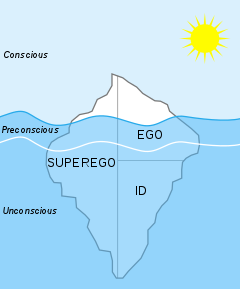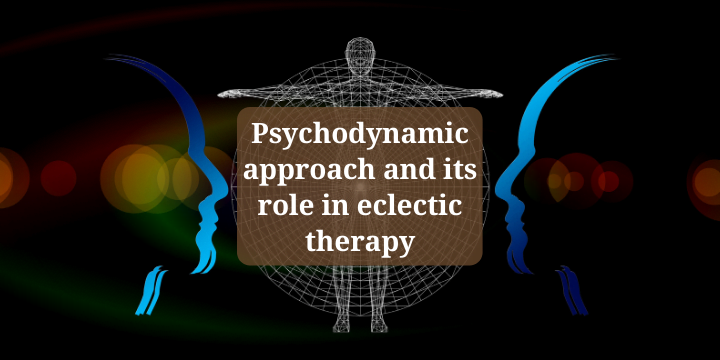The psychodynamic theory in psychology is grounded in the belief that human functioning is driven by the interaction of drives and psychological forces within the person, particularly those that are unconscious. This approach is rooted in Freud’s psychoanalysis but has evolved to incorporate the ideas of Jung, Adler, Erikson, Karen Horney, Erich Fromm, and Sullivan, among others.
Today, the psychodynamic approach is a diverse and rich therapeutic field, incorporating multiple schools of thought and practices that continue to influence contemporary psychology. Integrating these principles with modern approaches like Cognitive Hypnotic Psychotherapy (CHP) can significantly enhance therapeutic outcomes and commercial success for practicing psychologists.

Core Principles of the Psychodynamic Approach
- The Unconscious Mind: Originating from Freud’s work, the unconscious mind is considered a reservoir of feelings, thoughts, and memories inaccessible to the conscious mind. These elements, especially if conflict-laden, can profoundly influence behaviours and feelings, often surfacing indirectly through dreams or seemingly unintentional actions.
- Psychosexual Development: Freud proposed that personality develops through stages from birth to adulthood, each characterized by psychological pleasure associated with different areas of the body. Navigating these stages successfully or unsuccessfully can deeply impact adult personality and behaviour.
- Defense Mechanisms: Unconscious psychological strategies brought into play by the ego to shield the individual from anxiety-arising thoughts or feelings. These range from repression (blocking unacceptable thoughts) to projection (attributing unwanted feelings to someone else).
- Psychic Determinism: The belief that all mental and behavioural reactions are determined by internal psychological processes and are meaningful responses to stimuli, suggesting that nothing happens by chance.
- Instinctual Drives: Freud identified Eros (life instinct, encompassing sexual drive) and Thanatos (death instinct, associated with aggression) as fundamental motivators of human behaviour, influencing actions and interactions.
Theoretical Frameworks

- Topographical Model: Freud’s topographical model divides the mind into three levels: the conscious (awareness), the preconscious (accessible information), and the unconscious (hidden, significant content). These levels interact dynamically, shaping an individual’s psychological landscape.
- Structural Model: Expanding on his earlier work, Freud introduced the structural model, which includes the id (instinctual desires), the ego (rational thought), and the superego (moral standards). The interplay among these three components governs behaviour and can lead to internal conflicts when they are misaligned.
- Object Relations Theory: This theory extends the importance of early relationships, suggesting that the bonds formed with primary caregivers play a critical role in the development of the ‘self’ and influence future interpersonal relationships. It emphasizes the impact of early attachment and emotional connections on personality.
- Attachment Theory: Building on object relations, attachment theory examines the nature of the child-caregiver relationship and its long-term effects on individual attachment styles. These attachment patterns are reflected in relationships throughout a person’s life, affecting their ability to form and maintain bonds.
Together, these principles and frameworks form the intricate structure of the psychodynamic approach, providing practitioners with profound insights into the human psyche and behaviour. Applying psychodynamic theories in therapy offers a rich context for exploring and addressing clients’ psychological issues, promoting deeper self-awareness and emotional healing.
Therapeutic Techniques based on the Psychodynamic Theories
Therapists using this approach encourage clients to speak freely about their emotions, identify patterns in thoughts, emotions, and behaviours, and understand the significance of these patterns. By exploring the client’s past and childhood experiences, therapists help clients connect past experiences to current problems and utilize their internal resources to address these issues.

Tools and Techniques:
- Free Association: Allows clients to let their thoughts flow freely without conscious analysis, potentially accessing unconscious information. However, this can be time-consuming and may lead to unrelated detours.
- Freudian Slip: Also known as a slip of the tongue, this psychoanalytic tool refers to an unintentional error regarded as revealing subconscious feelings.
- Transference: Clients project feelings for someone else onto the therapist, providing insights into their conflicts with the projected person.
- Dream Analysis: Interpreting dreams to understand the unconscious content and resolve conflicts.
- Hypnosis: Initially used by Freud to access the unconscious, modern hypnosis techniques have evolved, making it easier to integrate with psychodynamic principles for quicker results.
Strengths and Limitations of the Psychodynamic Approach
Strengths:
- In-depth Exploration: Promotes insight into unconscious motivation and emotional conflicts.
- Therapeutic Relationship: Facilitates processing complex emotions within a trusted relationship, leading to profound shifts in self-perception and relationships.
Limitations:
- Determinism: Suggests behaviour is predetermined, potentially undermining the concept of free will.
- Childhood Focus: Overemphasis on childhood experiences, which may not be necessary for addressing all issues.
- Transference Risks: Requires sharing deep secrets, increasing the risk of transference and counter-transference with potential negative side effects.
- Therapist Bias: Interpretation by the therapist can be influenced by personal biases, potentially affecting the therapy’s accuracy.
- Duration: Typically involves long-term treatment, which may not align with all clients’ needs or resources.
Despite these critiques, the depth and thoroughness of psychodynamic therapy ensure it remains a pivotal treatment in the therapy field, aiming for transformative change at the core of the individual’s experience.
Comparison with Other Therapeutic Approaches
- Behavioural Approach: Focuses on modifying overt behaviours using conditioning techniques. Psychodynamic therapy, in contrast, delves deeper into unconscious motives.
- Cognitive Approach: Aims to change maladaptive thoughts and beliefs. Psychodynamic therapy looks beyond conscious thought patterns to uncover hidden psychological conflicts.
- Humanistic Approach: Emphasizes self-actualization and personal growth, focusing on conscious experiences. The psychodynamic method explores unresolved issues from a person’s past.
The Relationship of Psychodynamic Therapy with Cognitive Hypnotic Psychotherapy
The relationship between Psychodynamic Therapy and Cognitive Hypnotic Psychotherapy (CHP) is one of complement and enhancement. CHP is a modern, integrative approach combining elements of psychodynamic theories with cognitive-behavioural strategies and hypnotic techniques, addressing both the conscious and unconscious aspects of the mind.
Commonalities:
- Depth of Understanding: Both approaches value understanding the individual and the influence of unconscious processes on behaviour.
- Goal of Change: Aim to bring underlying issues to light for meaningful change.
Differences:
- Techniques and Speed: Psychodynamic therapy relies on interpretation and insight, while CHP uses direct suggestions, mental imagery, and NLP language patterns for rapid transformation.
How CHP Overcomes Limitations:
- Multilayered Approach: Recognizes problems can exist at multiple levels, allowing targeted intervention without necessarily exploring past and childhood memories.
- Efficiency with Hypnosis: Hypnosis facilitates quick connection with the unconscious, making exploration of repressed memories faster and clearer.
- Reduced Therapist Bias: Hypnotic techniques reduce the need for therapist interpretation, limiting the influence of biases.
Conclusion

Psychodynamic Therapy has remained a cornerstone of psychological treatment since its inception, offering deep insights into unconscious influences that shape our present selves. Its rich history and nuanced principles provide therapists with a robust toolset for facilitating lasting change.
However, as the field of psychotherapy evolves, integrative approaches like Cognitive Hypnotic Psychotherapy (CHP) enhance traditional modalities. By combining the strengths of psychodynamic insights with cognitive-behavioural techniques and hypnosis, CHP accelerates the healing process and offers clients a comprehensive therapeutic experience.
Practitioners who embrace CHP enrich their practice, meeting diverse client needs with flexibility and depth. For those seeking advanced skill development, CHP training represents an invaluable opportunity to enhance therapeutic capabilities and achieve meaningful, expedient results.
For more detailed examples and case studies demonstrating the effectiveness of CHP, visit Institute of Clinical Hypnosis – Case Studies.
Embracing the synergy of psychodynamic therapy and CHP provides a holistic path for psychological wellness and professional excellence, combining tradition with innovation for optimal client outcomes.

